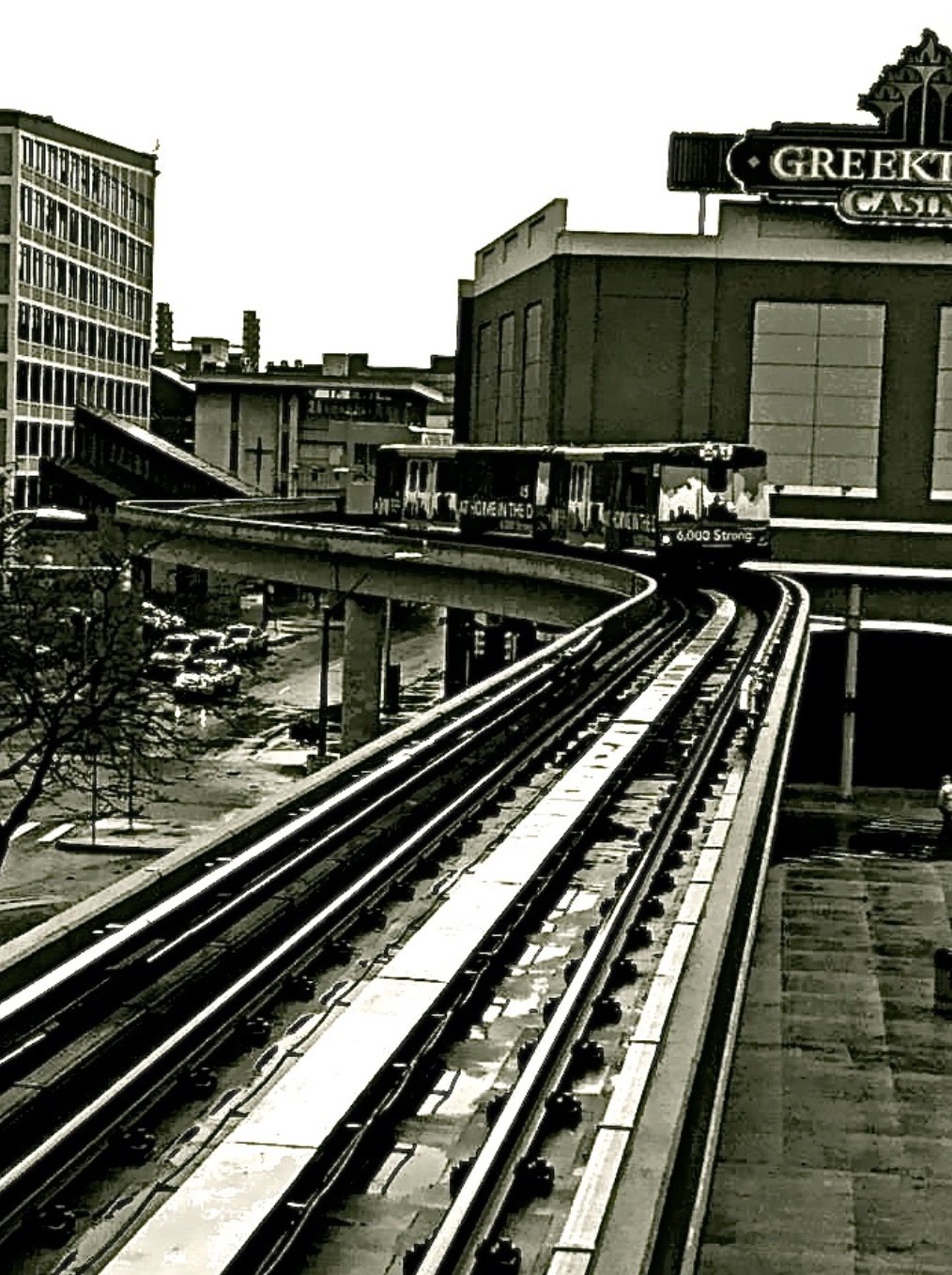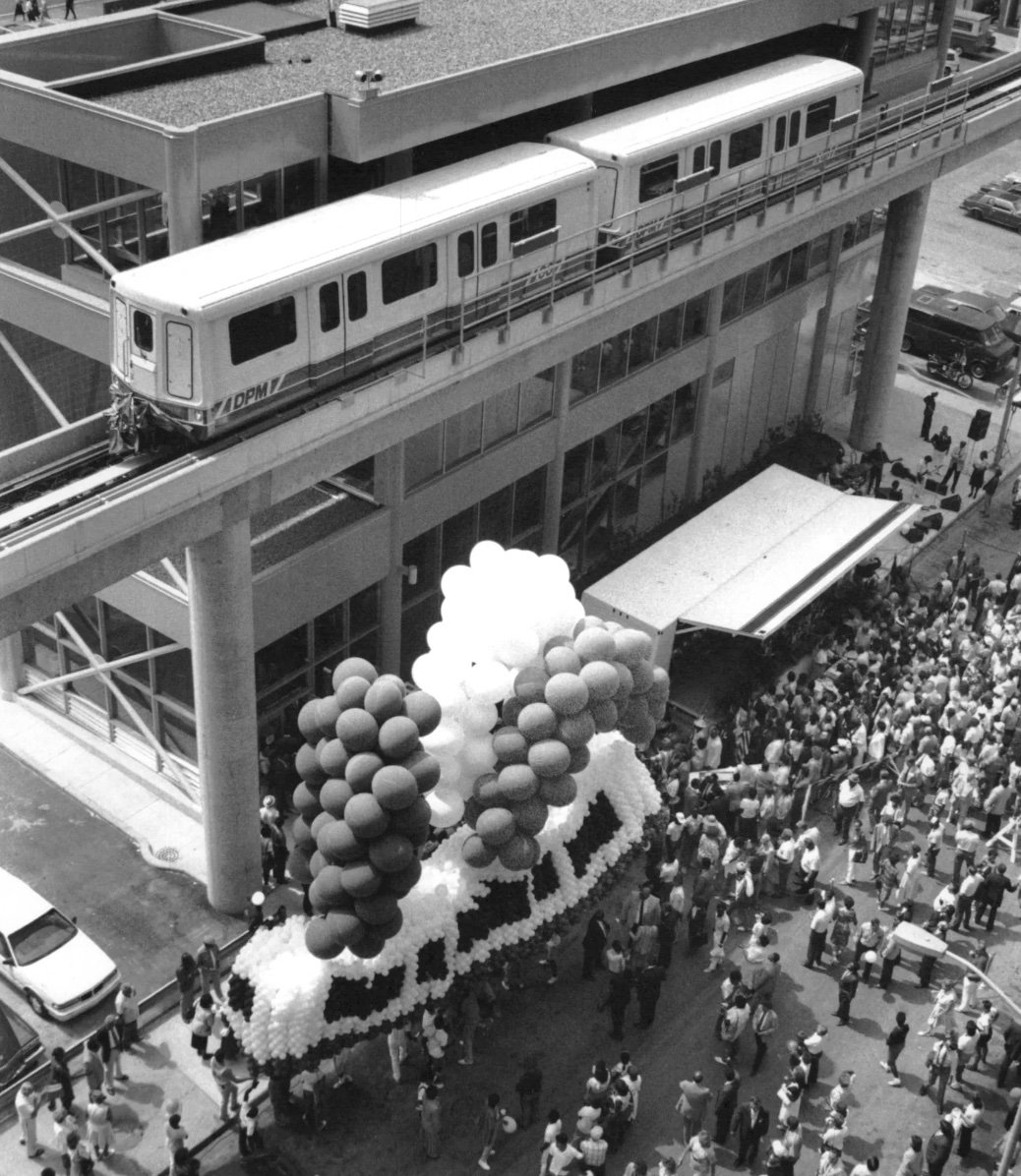About Detroit People Mover
The Detroit People Mover is an enhanced public transit service which provides transportation that affects not only the image of the city but also plays a role in the attraction of conventions and tourism, businesses and entertainment to downtown Detroit. Media, policy makers and the film industry all have incorporated the People Mover as a positive iconic symbol, one that is not an immobile landmark, but a functioning, utilized transit provider that supports the city.
Workers, employers and visitors from across the globe who travel to downtown districts in major metropolitan cities have expectations that would be regarded as "core" or essential: their safety, mobility, access to notable venues and overall experience. The Detroit People Mover contributes positively in every one of those areas, as proven by our inclusion and involvement for years in the role of promoting a positive image of downtown.
DTC Board Meetings
Please see more detailed info on how to attend a DTC board meeting, full schedule of meeting dates, and learn about any meeting date updates by clicking the button below.
WORKING WITH DTC
History of DPM
The Detroit People Mover (DPM) was built as part of an Urban Mass Transportation Administration (UMTA) - now Federal Transit Administration (FTA) - Demonstration Project. The intent of that program was to determine (a) how well a fully automated transit system might contribute to the revitalization of Central Business Districts of major older cities, and (b) if such an automated technology could provide effective circulation/distribution service at a cost lower than conventional bus systems.
Construction of the DPM system began in the spring of 1983 under the auspices of the Southeastern Michigan Transit Authority (SEMTA) - now the Suburban Mobility Authority for Regional Transportation (SMART). On October 3, 1985, the Detroit Transportation Corporation (DTC) was established to be the agency responsible for completion of the project construction and thereafter assumed full ownership responsibility for the DPM. The DPM system opened to the public on July 31, 1987.
Company Profile
The DTC is owner and operator of the DPM. The Detroit People Mover is a fully automated, light rail system that operates on an elevated, single-track guide way loop in Detroit's central business district. The system provides connections between the courts and administrative offices of several levels of government, sport arenas, exhibition centers, major hotels, and commercial, banking and retail districts. Service is frequent, unencumbered by vehicle or pedestrian traffic, and conveniently available throughout the central business district. The integration of eight of the thirteen People Mover stations into pre-existing structures links over 9 million square feet that allows patrons to travel unimpeded by outside elements.
The DTC provides service to its customers according to a seven-day schedule, which is free to ride since 2024. A fleet of fully automated vehicles, which are deployed in two car trains, provides this service. These vehicles are propelled by two linear induction motors per car which move the steel-wheeled vehicles over the system's 2.9 miles of continuously welded, steel rail track. Each vehicle is heated or air conditioned as required for customer comfort. When in full loop operations and maximum train service, the vehicles are scheduled to provide arrivals in 5 to 8 minute intervals. Completion of the entire route takes approximately 15 minutes.
The DPM guideway is completely elevated and can be currently accessed at any of the 13 passenger stations which are spaced predominately at quarter-mile intervals around the alignment. Stations are accessible to elderly and disabled persons. GM Renaissance Center underwent a two-year renovation and reopened on November 22, 2004. Grand Circus Park is the newest re-constructed station, which opened in 2015. Eight of the 13 People Mover stations (Times Square, Huntington Place, Water Square, Financial District, Millender Center, Renaissance Center, Greektown, Grand Circus Park) are integrated into adjacent buildings, and the remaining five free-standing stations (Michigan, Fort/Cass, Bricktown, Cadillac Center, Broadway) are designed to facilitate direct access from future developments at the platform level if and when that is appropriate.
Each of the 13 DPM stations contains major works of art. These works generate considerable interest, promote ridership and enhance the appearance of the system. In addition, the 18-piece exhibit, collectively named Art in the Stations, has won numerous national as well as international recognition for outstanding public art. In 2024, exterior murals joined the collection, from talented new voices in the Detroit’s local art scene . As part of our partnership with City Walls Detroit, murals are outside of five stations featuring original works by Fe’le (Michigan); Nicole MacDonald (Fort/Cass); Nick Pizana (West Riverfront); Charles Miller (Broadway) and Anthony Lee (Bricktown). The People Mover also was one of five cities that received a mural from the NASA Lifelines Program, featuring a new work by Detroit muralist Waleed Johnson and located on the exterior of the DPM Maintenance Facility at Michigan Avenue, between Washington Boulevard and Cass Avenue.
Operations/Maintenance
DPM stations are monitored by closed-circuit TV cameras, push-to-talk voice communication equipment and voice monitoring capability. These devices are observed 24 hours per day by Central Control Operators. The Operators have overall responsibility for the coordination of system operation. Their responsibilities include train control and the interface of activities between passengers, transit officers, maintenance staff and/or outside contractors to provide safe and efficient operation of the system. Although the Automated Train Control system is capable of running a variety of vehicle fleet configurations, the Control Operators have override capabilities to cope with unpredictable situations that may occur during normal operation.
Maintenance of the DPM system is provided by in-house staff (supplemented by expert contractors) that are responsible for the guideway, fixed facilities, rolling stock, communications, and miscellaneous test equipment to support system operations.





























